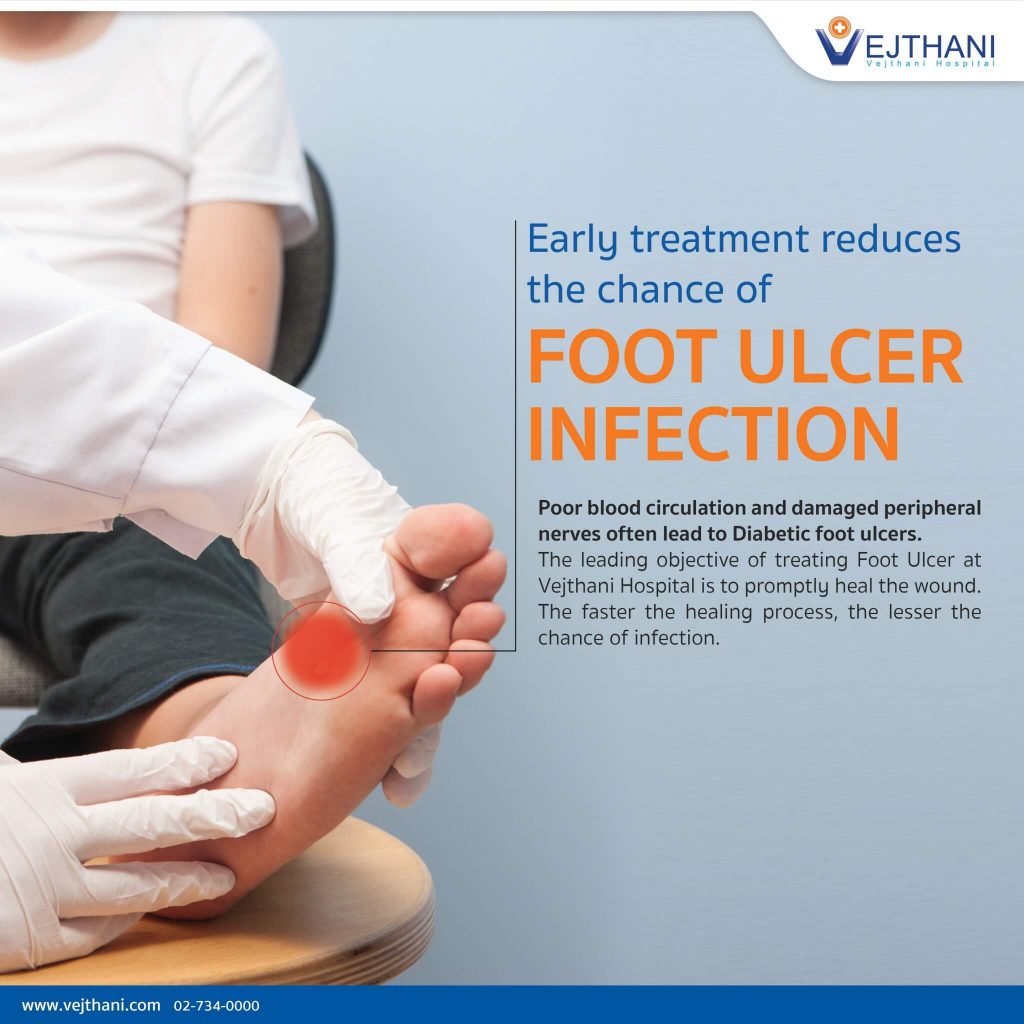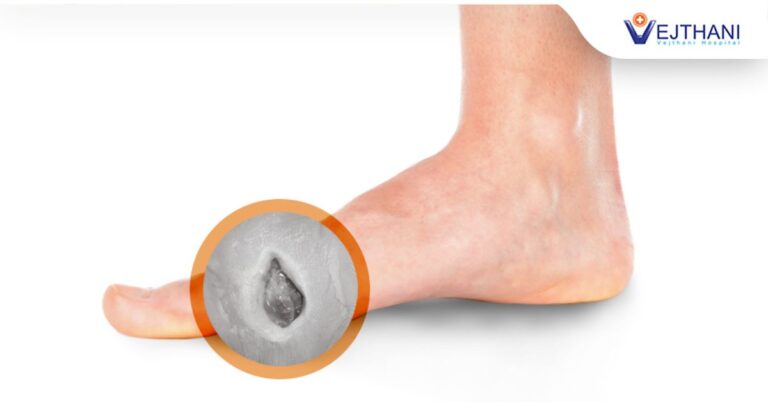

Diabetes is the dominant cause of non-traumatic lower limb amputations. Six percent of patients who develop diabetic foot ulcer are hospitalized because of infections and other related complications. Patients who suffer from diabetes mellitus (DM) and have years of uncontrolled blood sugar level may experience vascular complications, impaired peripheral nerves and wound.
Diabetic foot ulcer is developed by several combined factors, such as poor blood circulation and foot deformities. In Addition, diabetic patients have the tendency to develop severe neuropathy, which is a complete lack of feeling in the feet because of nerve damage triggered by high level of blood glucose. Long-term uncontrolled blood sugar does not only damage the nerves but also hinder their abilities to send signals. Nerve damage is generally painless causing patients to be unaware of the symptoms. Aside from complications arising from nerve damage, vascular disease can also affect foot ulcers as it reduces healing power and increases the risk of infection.
As foot ulcer patients lose the ability to feel in their feet, pain is not a common symptom of the disease. People may experience drainage in their socks along with swelling or redness. There may be some odour if the condition progress significantly.
Treatment of Diabetic Foot Ulcer
The leading objective of treating Foot Ulcer at Vejthani Hospital is to promptly heal the condition. The faster the healing process, the lesser the chance of infection. Apart from that, treating foot ulcer will prevent potential amputation, and ultimately improve the quality of life.
The treatment of foot ulcer consists of the following process:
- “Off–loading” is the process of removing the pressure off the area that ulcer or wound has formed.
- “Debridement” is the process of removing dead skin and tissue.
- Application of medication and wound dressing ranges from saline to advanced products like skin substitutes which is effective in the healing of foot ulcers.
- Manage blood sugar level and other medical issues.
- Surgical option is only considered when conservative treatment failed. This may include shaving or bone excisions, correction of several deformities such as bunions, bony bumps or hammertoes. However, most of the noninfected foot ulcers can be treated without surgery.
Reasons why foot ulcers can form on and off in some cases:
- Ingrown toenail requires conservative treatment. Look after your toenails daily, keep them clean. Do not trim your toenails too short or grow them too long. Do not pick them with your fingers, it may cause wound or ulcer to develop. Antibiotics may be considered if needed.
- Tip toe callus or ulcer can also be treated with conservative method. Calluses are generally trimmed. Local wound will be treated by debridement or off-loading method. If callus is present, soft sole or soft padding under toes footwear will be given.
Therapeutic footwear is crucial in the treatment of diabetic foot ulcer. Therapeutic footwear is usually custom-made. Several components such as insole, outsole, upper, vamp and heel counter should therefore be carefully assessed when a pair is designed for the patient. It may need a few adjustments until it is a perfect fit and can prevent potential problems.
Like other diseases, foot ulcer can be healed if treated early. Wound size, the location of the ulcer, pressure on the area when walking or standing, swelling, blood circulations, blood glucose levels, wound care and exposure of the ulcer are various factors that determine the healing period. Healing may begin within weeks or months after the treatment.
Seek medical advice immediately if you are having any signs that concern you, regardless of how small they are. Because a tiny sore may rapidly turn into a foot ulcer infection if not treated properly.
- Readers Rating
- Rated 5 stars
5 / 5 ( Reviewers) - Spectacular
- Your Rating






















